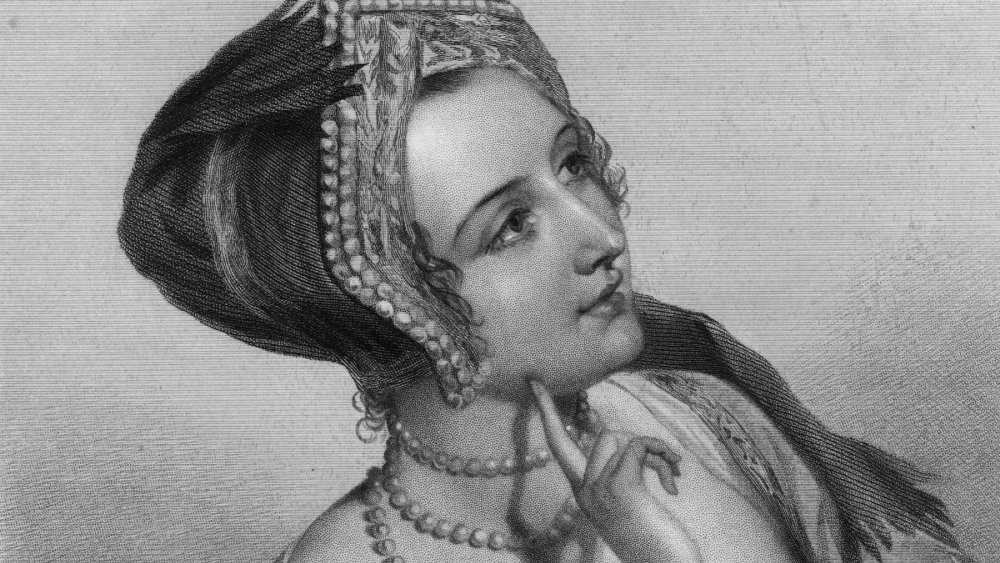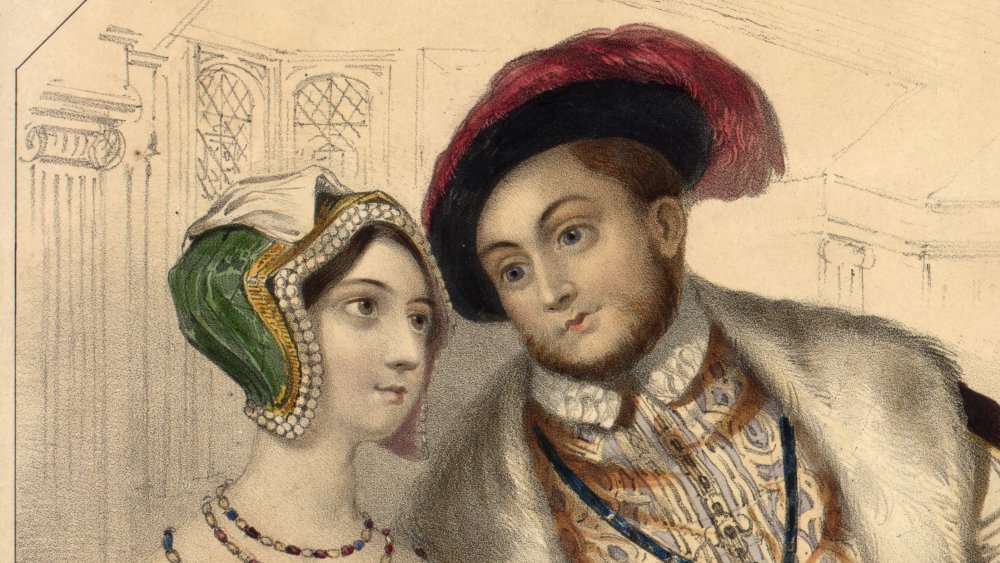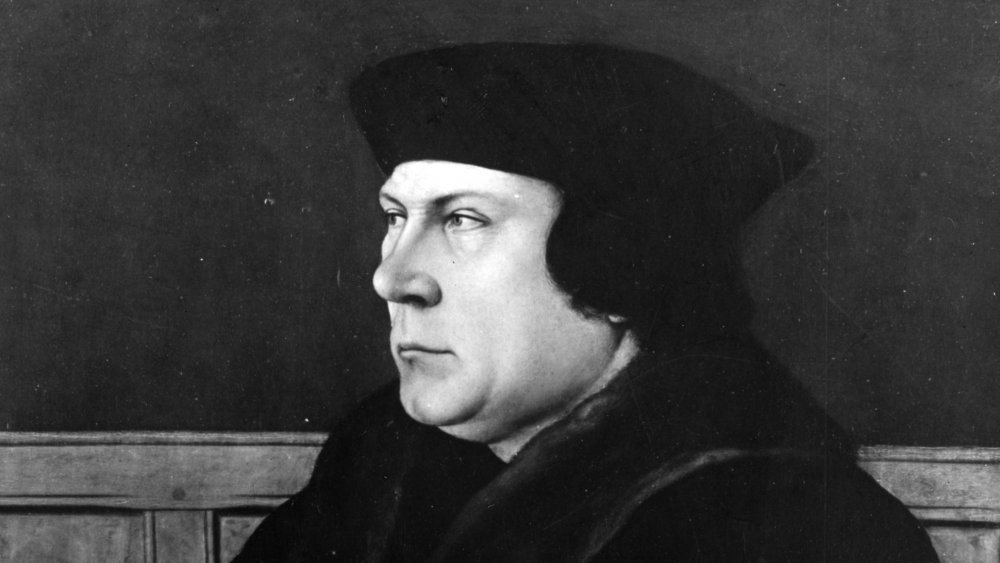The Tragic Final Days Of Henry VIII's Second Wife, Anne Boleyn
You could do worse than marrying the King of England. That had to have gone through her mind. All six of them, actually, wedded, for varying periods of time, to Henry Tudor, King Henry VIII of England. What could go wrong? What, indeed. The first marriage, to Catherine of Aragon, required leaping through numerous legal hoops, both ecclesiastical and civil: she was the widow of Arthur, Henry's older brother, assumed to take the throne with the death of their father, Henry VII. Arthur had the bad manners to die before that happened, and so Henry, next in line, asked permission from the pope to marry his brother's widow. Permission granted. Next up: children, especially male children — heirs to the throne. Catherine's one baby who survived was a girl, Mary. After well more than 20 years, Henry began to look around.
It's not as though he was faithful to begin with; Anne wasn't his first affair, but she enchanted him and was impregnated by him before they married in secret, per Biography. That child, the future Queen Elizabeth I, was the only one of Anne's babies who survived — at least three other pregnancies ended in the death of the unborn child, one near term, the other two as miscarriages.
It's all fun and games until someone loses an heir
Henry, increasingly desperate for a male heir, became involved with one of Anne's maids, Jane Seymour — also one of Anne's second cousins, says the BBC's History Extra — and it all went south from there.
Another History Extra article posits that powerful forces wanted Anne removed from Henry's life. Some claim she was framed, either by Henry himself, or by Thomas Cromwell, who served as Henry's chief minister (and who would later be executed himself). Either way, Anne was found guilty of crimes against the king: adultery with five different individuals, including her own brother, and conspiring with those individuals to murder the king. Anne was unpopular with the people of England, but no one today seems to believe that she was guilty of anything other than marrying a ruthless monarch.
She proclaimed her innocence, to no good effect. The trial lasted all of three days. The five men were sentenced to be hanged, drawn, and quartered, though Henry commuted their sentences to simple beheading. Anne would be either decapitated or burned alive, depending on Henry's whim, though there's some evidence that the headsman was lined up before the guilty verdict was given.
Anne might have been framed by Thomas Cromwell
She was taken to the Tower of London, where she confessed her sins to a priest, received Communion, and stated that "she had not misconducted herself so far as her husband the King was concerned." Anne's execution was delayed slightly so that the Tower of London could be cleared of witnesses, especially foreign diplomats.
One of the witnesses who remained was Sir William Kingston, who believed Anne took "much joy and pleasure in death." She made a joke about the challenge her "little neck" presented to the headsman. On May 19 she was taken to the place of execution, wearing ermine (a sign of royal status) and crimson (a sign of martyrdom). She made a short speech, asking people to pray for her and calling Henry "a good, a gentle, and sovereign lord."
Her head came off with one stroke of the sword. Oddly, no one had thought to procure a coffin, and so Anne's remains were placed in an old elm chest before burial in the chancel of the Chapel of St. Peter ad Vincula. She was probably in her early 30s.


